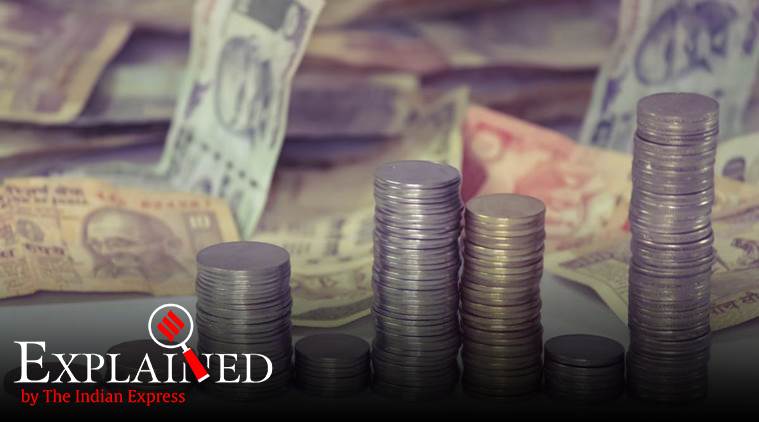Even as the Sensex at the Bombay Stock Exchange rose by over 800 points, or 2.2 per cent, on Monday following the Finance Minister’s announcement on Friday to roll back the surcharge on FPIs along with other measures aimed at improving liquidity in the market and lift sentiment, the Indian rupee fell sharply by up to 40 paise against the dollar to hit 72.05.
Why did the rupee fall?
Normally, the rupee moves in line with the movement of the stock market, as a positive development impacts both the currency and the bourses in a similar manner.
On Monday, however, even as the Sensex jumped in reaction to the announcements on the domestic stimulus, the rupee reeled under global pressure as markets remained concerned over an escalation of the trade tariff war between the United States and China.
As the Renminbi fell to a new 11-year low of 7.15 against the dollar on Monday on rising concerns over the tariff war, most emerging market currencies, including the Malaysian Ringgit, the Indonesian Rupiah, and the South African Rand, came under pressure. So did the rupee, which fell sharply intra day.
What is the like between RMB and INR?
A weakness in the renminbi (yuan) increases the competitiveness of Chinese exports, as every dollar can import larger quantities of Chinese goods. At the same time, it puts competing countries under pressure, as their goods become relatively more expensive. However, as the Chinese currency has fallen sharply in August by over 3.7 per cent, the rupee has also lost over 4.5 per cent this month.
Interestingly, the Indian central bank has not intervened in the current rupee slide, unlike in the past when such a sharp fall in the rupee led to intervention by the RBI. Over the last three weeks, India’s foreign exchange reserves have risen from $429.6 billion (July 26, 2019) to $430.5 billion (August 16, 2019).
Published On : 27-08-2019
Source : Indian Express

